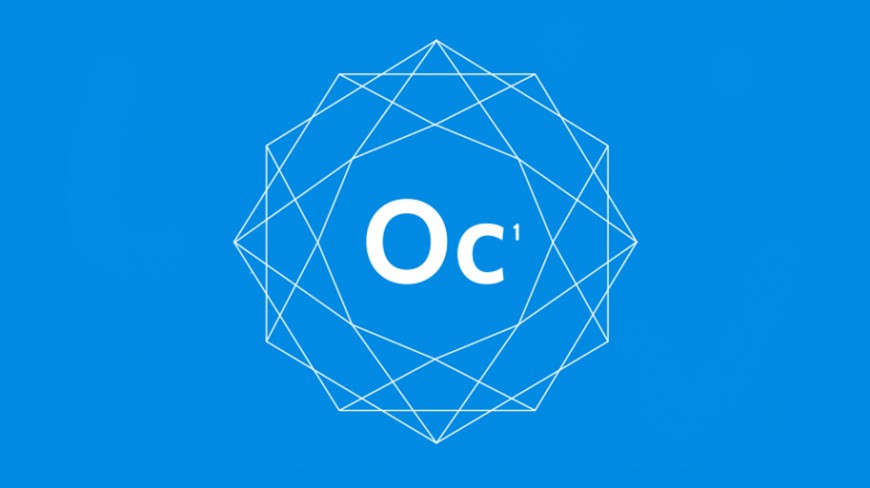
On September 19 and 20, Oculus hosted its first ever developer conference in Hollywood, California. The attendees of this conference were primarily content makers and developers excited about the Rift and its possibilities. The energy at the event was palpable, and with the demo rooms filled up, the hallways quickly became demo areas for attendees’ personal projects such that they were able to gather feedback and showcase what they had been working on. But for us, there were a few show highlights that were really compelling and kept us talking after we arrived back at the office. The following are a few takeaways from our experience at the event:
VR Hits Mobile – With the Launch of the Samsung Gear VR (and the Google Cardboard, although it was not at this event), it is clear to see that VR is going to end up on consumers’ phones. Everyone with a smartphone will be able to experience VR with an additional hardware piece into which their phones fit. Mobile VR experiences are extremely portable, so it is a smart move that should vastly increase the number of potential VR customers; however, the processors on phones are less powerful than those of full gaming rig PCs, so we expect to see some great content on mobile but content that will most likely be video-based or simplified 3D computer generated graphics.
Oculus Share – Since the Rift launch, Oculus Share has been a place where developers can showcase their work. Many developers have several applications with ratings and reviews for their respective apps. Oculus announced that this site would change into the equivalent of the “AppStore” for VR, thus changing the dynamic from a developer-to-developer relationship to an opportunity for significant developer exposure provided by a consumer-facing VR marketplace. The success of this marketplace would solidify Oculus Share’s position as the biggest repository of curated VR content available today.
John Carmack – One of the most impactful takeaways from the conference was seeing this brilliant man speak. John Carmack, with no notes prepared, captivated a packed keynote room for the entire time slot. He talked about the process of working with Samsung on VR and pushing their hardware as far as he could to achieve the best customer experience. He spoke at length about the current limitations of displays and how VR requires a need to think about what the display ought to do differently. The road map for VR displays will not be to create a more immersive screen, he said, but to instead try and create the effect of an inverted eyeball that more easily mimics a human’s vision. It’s clear that with John Carmack as CTO Oculus will be able to do great things that have never been done before.
Unreal Engine – At Helios, we use a variety of engines and frameworks to create experiences, ranging from Unity3D , Open Frameworks, and Node.JS to good ‘ol HTML + javascript – but one engine we are particularly enthusiastic about after some internal testing is the Unreal Engine 4. For our current VR experiences created in Unity3D, we really pushed what was possible for rendering a smooth scene. We believe that by using Unreal Engine, we can push that envelope much further for CG-heavy environments. The Unreal Engine teams walked through optimizations they made at an engine level so that, as a content creator, “it just works better.” Another takeaway was that the Unreal Engine is much more tweakable and it is therefore much easier to optimize bottlenecks within complex scenes. The Unreal Engine reps also talked about how stereoscopic capabilities change a lot of previously accepted video game engine techniques. For instance, billboard particles look like billboards and will appear as flat since they can only orient themselves effectively to one camera at a time.
Crescent Bay – The latest prototype headset was available to demo on the last day of Oculus Connect and there could not have been a better way to end the first VR conference. This was hands down the most engaging and immersive VR experience to date. The industrial design of the headset was much improved, allowing it to contour comfortably around my face instead of as snorkeling goggles I have on too tightly. The inclusion of comfortable high-end headphones is a huge improvement as well, as anyone in the VR world can tell you that sound is of equal value to the visuals when implying presence. The screen was much improved, devoid of the bemoaned “screen door” effect of the DK2, and after a few seconds I almost forgot that I was wearing a VR headset. The inclusion of 360 tracking allow for more immersive and even gesture-controlled environments. The demos were so adept at creating presence that I had a genuinely emotional responses to the environment. When the T-Rex reared its head down a long hall, I felt the same fear and anxiety as I would have seeing Jurassic park the first time. The Showdown demo of the Unreal Team did a fantastic job of guiding me to reactions as I avoided bullet holes, moved around shrapnel, and ducked for cover, and the experience created presence without an HUD, which would have lessened the experience.
What do we think? VR is going to be huge. If the Crescent Bay headset is an indicator of the quality of a consumer level release then it will be a hit. As 360 degree video cameras become more readily available and the stitching software continues to improve, it is not a stretch to expect VR to begin to proliferate. Last year’s CES was the “Year of the Wearable” and we would not be surprised if, this year, a fairly heavy focus on VR and VR content creation tools is seen. I’d like to end on a point that was made in the Unreal session – VR is not just a fad, or simply a new technical achievment, or something with a lot of “buzz,” but rather the next iteration of the narrative:
Culturally, we started with oral storytelling. Records allowed for a written narrative. Performances initially lead to the formation of theatrical plays. Cinematography ushered in the era of film. Interaction enabled games to be engaging and fun.
And presence will be the key feature that empowers VR to be something more than a novelty – the next level of storytelling.
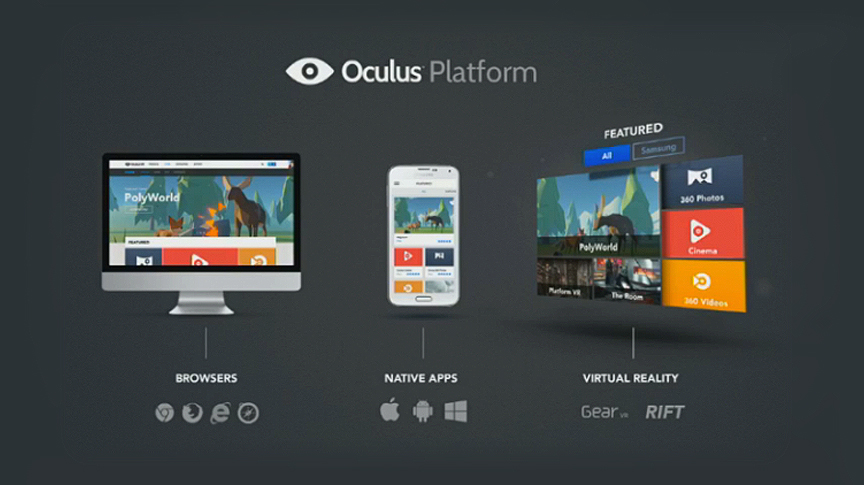
The Future of Oculus is across multi platform
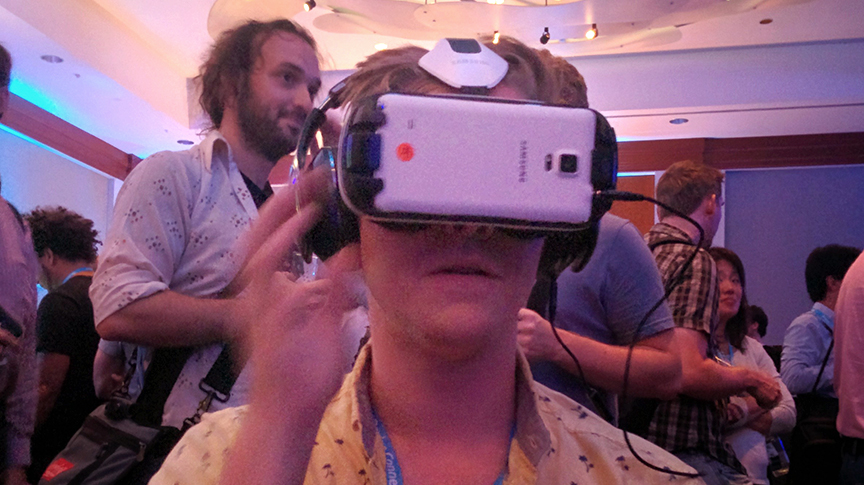
Trying out the Gear VR for the first time
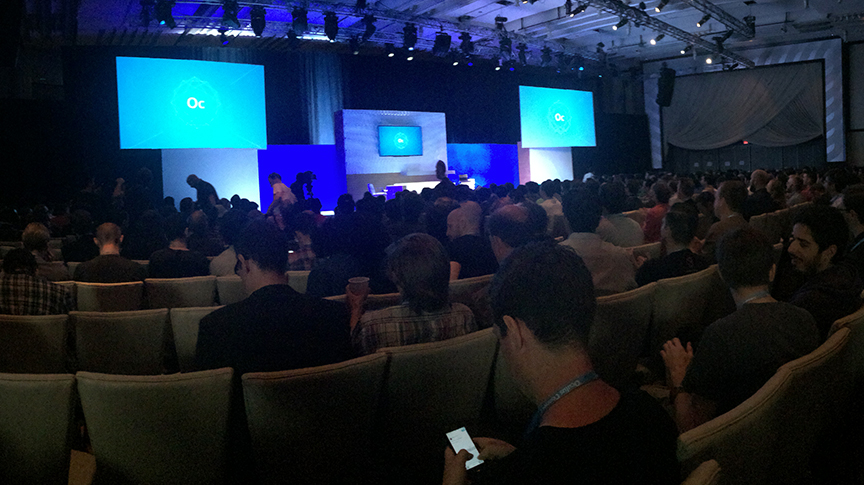
Keynote starting to fill up

What the sessions looked like
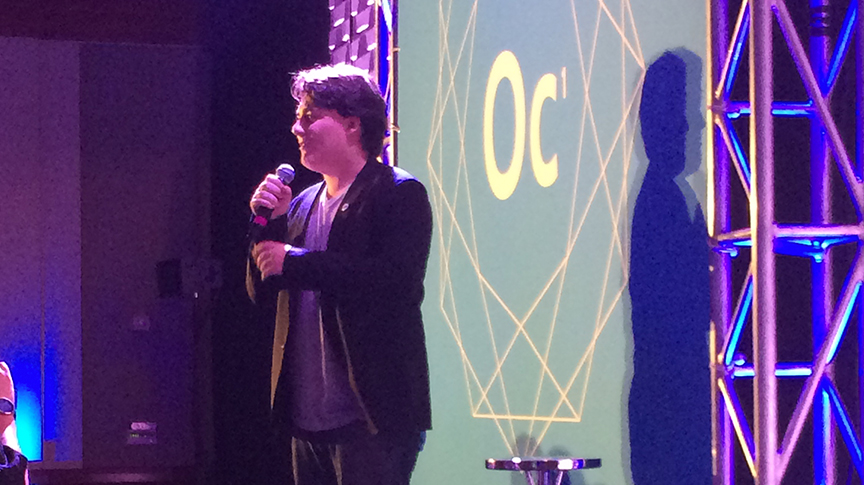
Oculus Founder Palmer Lucky thanking attendees for making great content

John Carmack speaking eloquently, off-script for 90 minutes
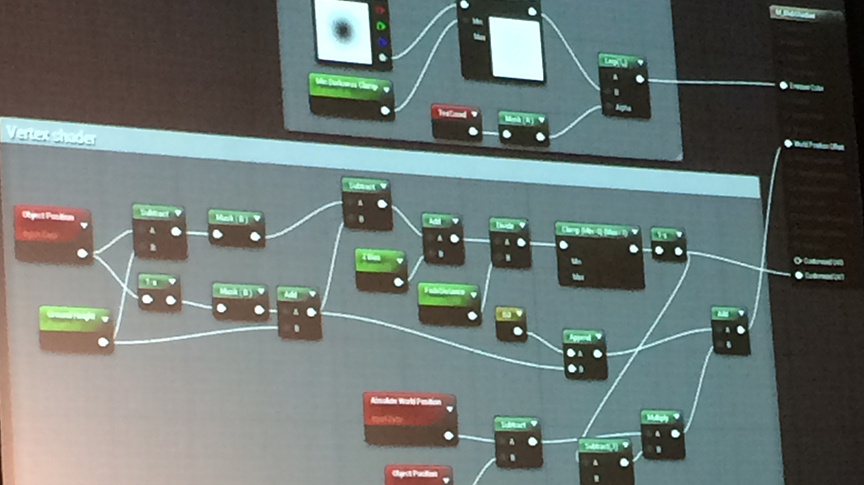
Under the hood optimizations for VR within Unreal Engine 4

Advice to consider
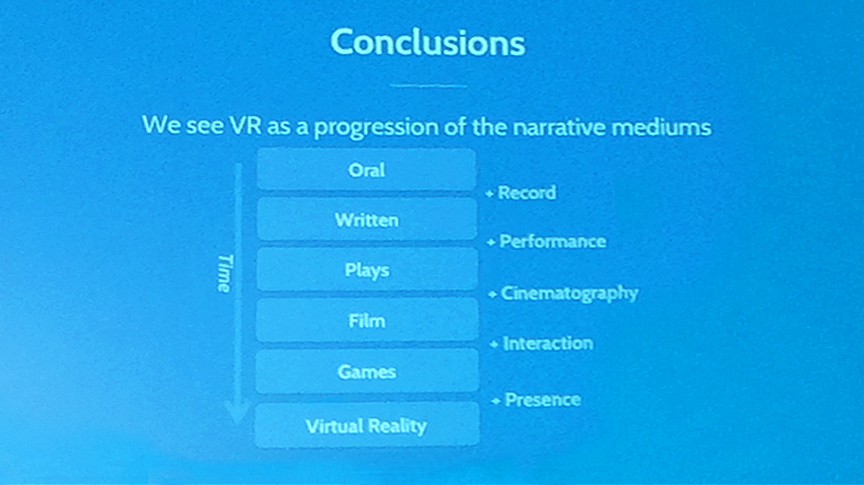
Timeline of storytelling
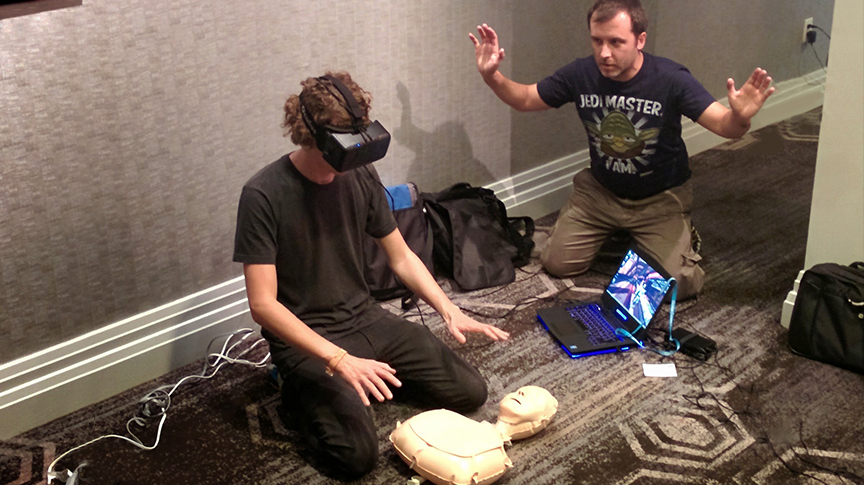
Virtual CPR simulator
